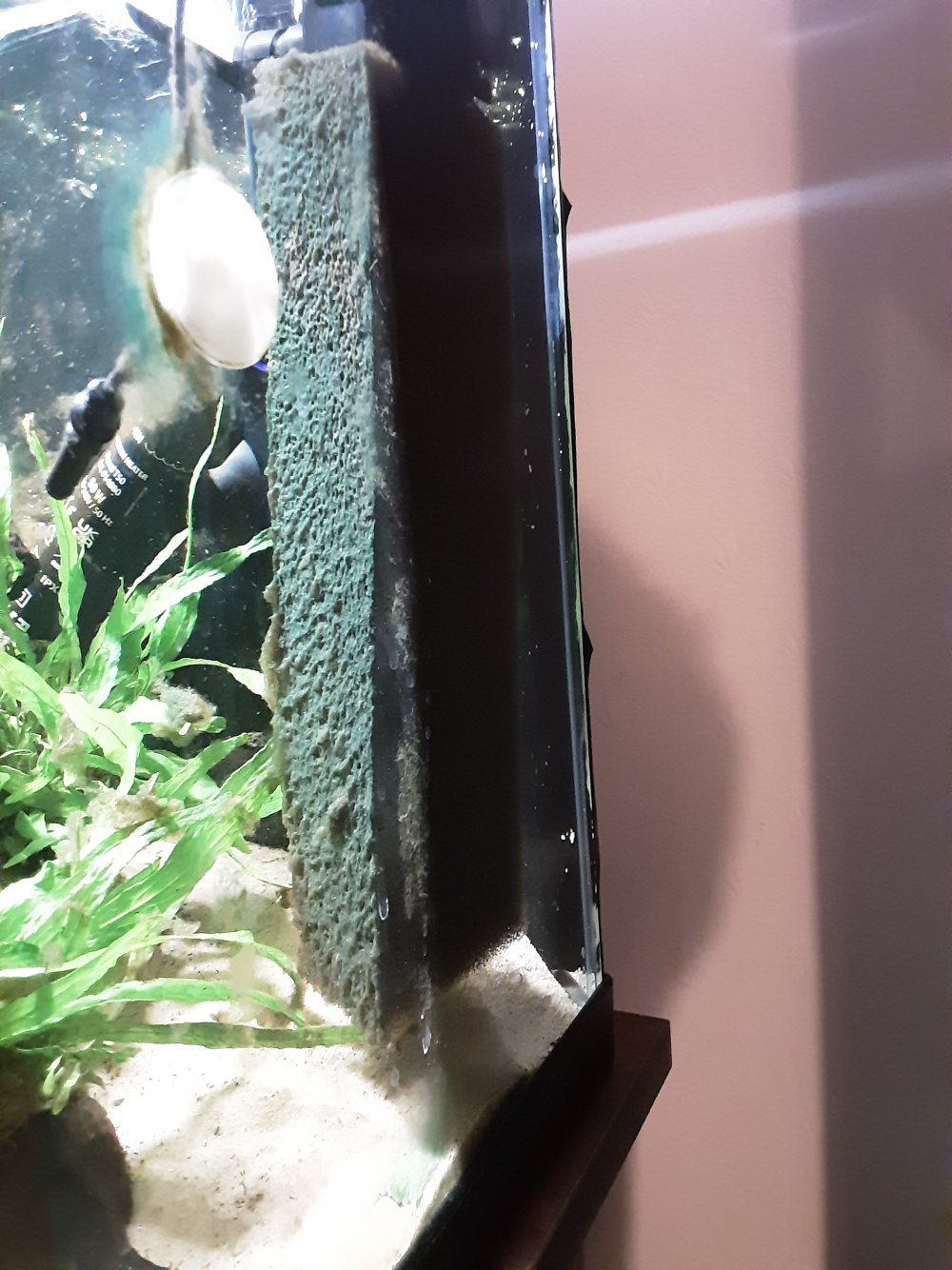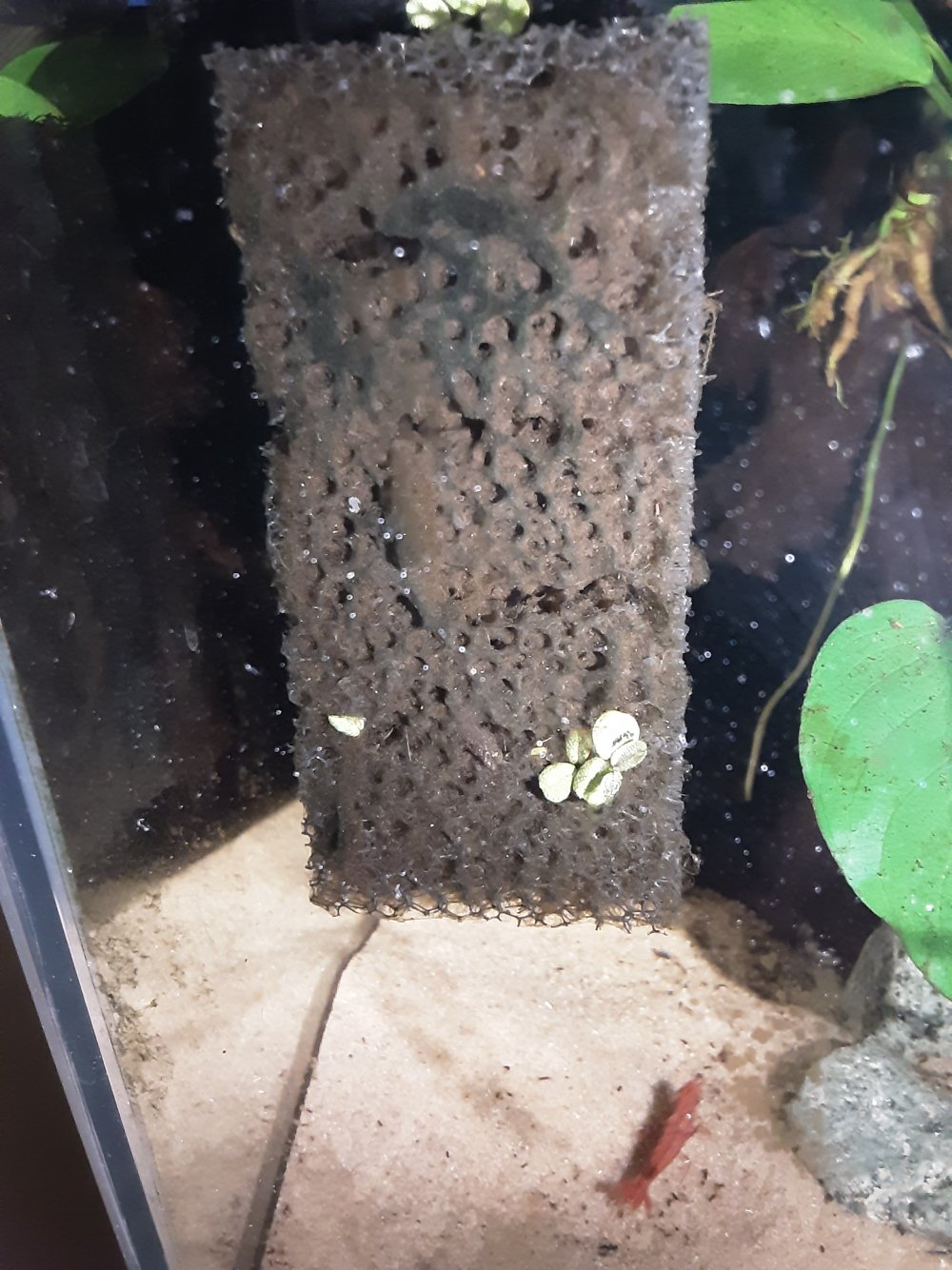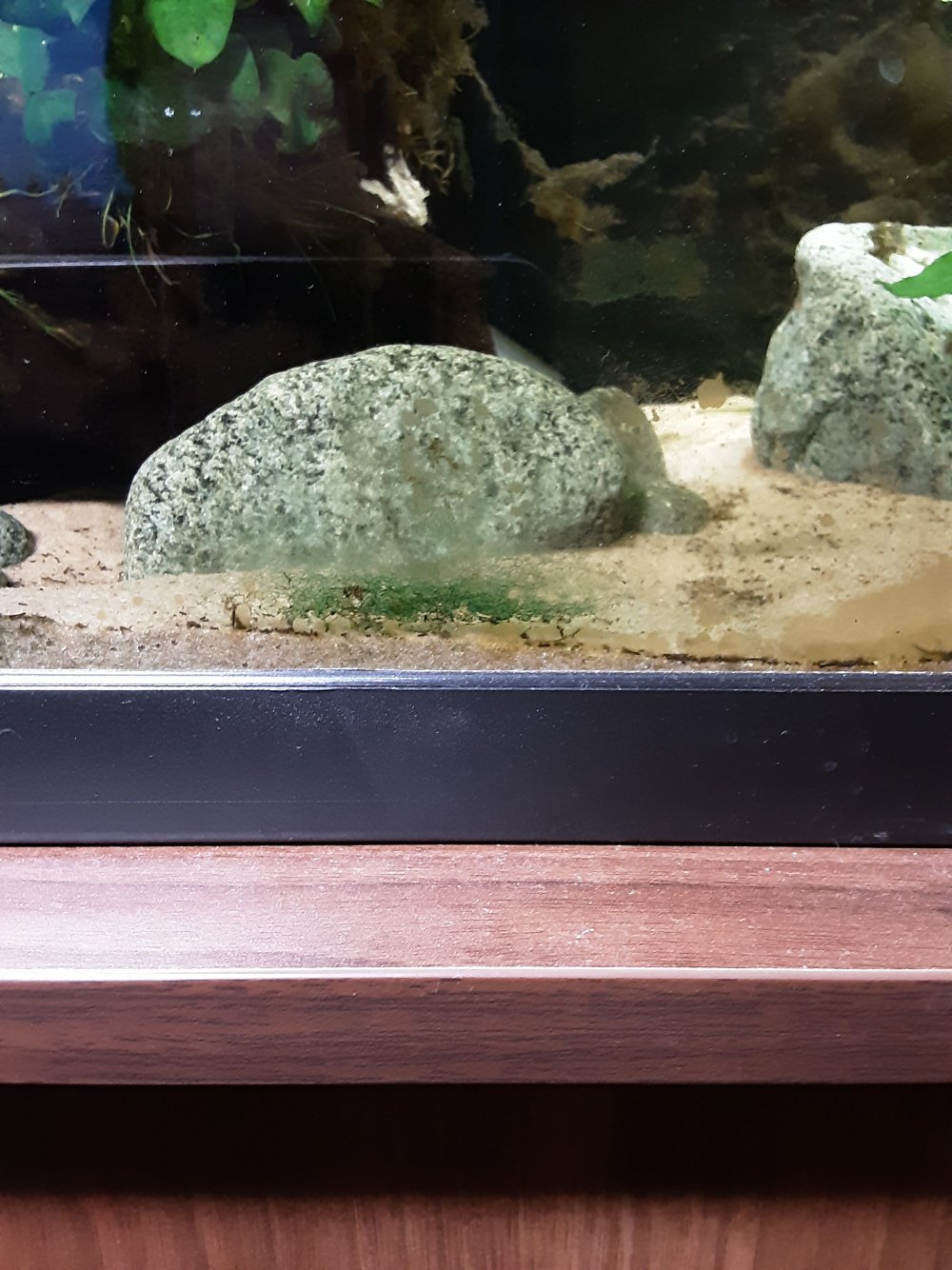1. 60ish litres
2. Setup is nearly 3 months old
3. Two sponges (30 ppi & 20ppi) attached to powerheads at opposite corners of tank, one with venturi and duckbill pointed towards surface.
4. 8hrs light via Ciano LEzdCLA60 (8W – 18VDC);
5. Fine Unipac silver sand substrate
6. Low tech
7. Per week: 6ml TNC Complete, 0.8ml TNC iron, 1.6g Epsom Salts
8. 50% WC per week (but switching to 20% due to new inhabitants)
9. Anubias, Java Fern, Java Moss, and Salvinia planted at initial setup
10. 8 neocaridina shrimp
Hello all,
I was wondering if anyone could identify this growth on my sponge filter (please see image)? It's a 30ppi poret sponge attached to an Aquael Pat Mini. My fear is that it's Cyanobacteria (even though there is no discernible smell, the colour seems to match). It started as a small patch but then spread over the course of a week or so.
There is also another smaller sponge with a powerhead showing similar growth but to a lesser extent (2nd image). This second sponge is not exposed to as much light as the larger sponge due to floating plants above it. Finally, a similar growth appears in patches on the glass (3rd picture), as well as some below the sand substrate at the front of the glass. However these last growths have been stable for several weeks and have not grown. There is no growth on the sand substrate itself. The large sponge has the most significant amount of this growth overall, both in size and speed.
If it is Cyanobacteria, what would be the best way to clean it off the sponges? I tried swishing it in a bucket of aquarium water but it didn't remove much of it. Would siphoning it directly off the sponge be detrimental to the beneficial bacteria being housed there (the sponge has been running for nearly 3 months, same age as the tank)? It's a low tech tank, 8 hours of light per day.
Thank you for any help, and happy to provide any further info.
2. Setup is nearly 3 months old
3. Two sponges (30 ppi & 20ppi) attached to powerheads at opposite corners of tank, one with venturi and duckbill pointed towards surface.
4. 8hrs light via Ciano LEzdCLA60 (8W – 18VDC);
5. Fine Unipac silver sand substrate
6. Low tech
7. Per week: 6ml TNC Complete, 0.8ml TNC iron, 1.6g Epsom Salts
8. 50% WC per week (but switching to 20% due to new inhabitants)
9. Anubias, Java Fern, Java Moss, and Salvinia planted at initial setup
10. 8 neocaridina shrimp
Hello all,
I was wondering if anyone could identify this growth on my sponge filter (please see image)? It's a 30ppi poret sponge attached to an Aquael Pat Mini. My fear is that it's Cyanobacteria (even though there is no discernible smell, the colour seems to match). It started as a small patch but then spread over the course of a week or so.
There is also another smaller sponge with a powerhead showing similar growth but to a lesser extent (2nd image). This second sponge is not exposed to as much light as the larger sponge due to floating plants above it. Finally, a similar growth appears in patches on the glass (3rd picture), as well as some below the sand substrate at the front of the glass. However these last growths have been stable for several weeks and have not grown. There is no growth on the sand substrate itself. The large sponge has the most significant amount of this growth overall, both in size and speed.
If it is Cyanobacteria, what would be the best way to clean it off the sponges? I tried swishing it in a bucket of aquarium water but it didn't remove much of it. Would siphoning it directly off the sponge be detrimental to the beneficial bacteria being housed there (the sponge has been running for nearly 3 months, same age as the tank)? It's a low tech tank, 8 hours of light per day.
Thank you for any help, and happy to provide any further info.
Attachments
Last edited:





